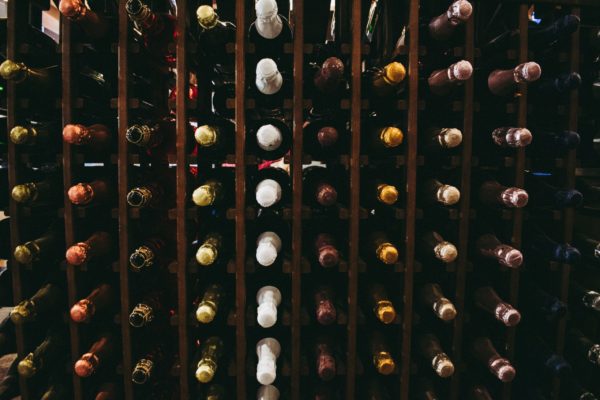If you’re a wine drinker, you’ve probably wondered at some point how long your bottles will last. There are so many different factors to the lifespan of a given wine. How do you know if your bottle has spoiled? How can you store wine to make it last longer?
In this article, we’ll tell you everything you need to know about proper wine storage, how long different types of wine last, and how to know if your wine has spoiled.
Does wine go bad?
Unfortunately, all food and beverages eventually go bad. This is true for wine as well. While many types of wine get better with age, this is not consistent across the board, especially after a wine has been opened. Unopened bottles of high-quality wine can last for decades without spoiling if stored properly. However, normal, inexpensive bottles don’t last nearly as long.
You’ll usually notice an expiration date on your wine that will tell you what date it should be consumed. However, if you have an unopened bottle of wine past its expiration date, it may still be okay to drink. We’ll tell you how to know if your wine has spoiled a bit later.
How long does wine last?
There are a variety of different factors that will dictate how long your bottle of wine will last. These factors include the quality of the wine, the type, whether it’s red or white, etc. Obviously, unopened bottles last much longer than opened bottles.
Here is how long common types of unopened wine will usually last:
- White wine will last one to two years after its printed expiration date
- Red wine will last two to three years past its printed expiration date
- Cooking wine will last three to five years past its printed expiration date
- Fine wine will last 10 to 20 years past its printed expiration date, provided it is properly stored in a wine cellar
Here is a list of how long common types of wines will last once they are opened:
- Sparkling wine will go flat within one to two days of being opened
- Light wine and rosé will last four to five days after being opened
- Red wines will last three to six days after being opened
- A dessert wine will last three to seven days after being opened
- Port will last one to three weeks after being opened
- Sherry will last one to eight weeks after being opened
Why does wine go bad?
So, what actually causes a bottle of wine to spoil? Well, it’s mainly due to exposure to the elements outside of the bottle. Once a bottle of wine is opened, oxygen, light, heat, yeast, and bacteria can enter the wine. These things all cause chemical reactions within your wine that alter the quality.
The reason unopened bottles of wine last longer is because they are corked. The cork is a crucial component to preserving a bottle of wine long-term. Corks have been used for thousands of years to preserve wine because they severely stunt the oxidation process but still allow a small amount of oxygen into the bottle. Wine needs to be exposed to a minimal amount of air to develop and mature and expel unwanted aromas.
The reason why even expensive, high-quality wines go bad eventually is usually that the cork deteriorates. Cork is a natural material, and once it deteriorates, the wine is exposed to the environment and will eventually go bad.
How can you tell if a wine has spoiled?
So, you have a bottle of wine that you’re on the fence about drinking. How can you tell if it’s spoiled? There are various ways you can tell if your bottle of wine is past its prime. If you notice any of the following things, definitely avoid drinking a glass.
Color is a big indicator that will tell you if your wine is safe to drink or has gone bad. Wine changes color when it oxidizes. If you notice a wine that was red or purple colored has turned brown, or a bottle of white wine has turned golden or opaque, it should be discarded.
The smell is another great indicator to tell you if your wine has gone bad. A wine that has been left open for too long may have a sharp, vinegar-like smell, like sauerkraut. This is due to the excess presence of acid and bacteria, such as lactic acid bacteria or acetic acid. A wine that has gone stale may smell nutty, smell like applesauce, or smell like burnt marshmallows.
An unopened wine that has gone bad may smell like garbage, cabbage, or burnt rubber. This is usually a sign of a wine exposed to too much oxygen during the winemaking process and has developed volatile sulfur compounds. If a wine smells like barnyard, sweat, Band-aids, or manure, that is an indicator that a bacteria called Brettanomyces, or Brett, has been allowed to run wild. In small quantities, Brett is totally fine. But left to develop over time, Brett can make a wine undrinkable.
Additionally, if your wine smells like a damp basement, wet dog, or moldy cardboard, this is a sign of TCA contamination, also known as “cork taint.” TCA stands for 2,4,6-Trichloroanisole, a harmless compound that most often occurs when chlorine-based cleaners come into contact with wood. Even in tiny amounts, TCA can affect the way your wine tastes and smells.
Tasting your wine is another great way to tell if it’s gone off if you’re feeling brave. Tasting a small sip of wine that’s gone bad won’t hurt you, but it may not necessarily be a pleasant experience. A wine that has gone bad may taste like chemicals, burnt applesauce, or have a sharp, sour flavor.
There are a few other visual cues you can look for to see if your wine is bad. If you notice fizzing or bubbles in a still wine, this means your wine has started to re-ferment. This indicates that the wine was bottled without sterilization, and the yeast has begun to eat the sugars present in the bottle. If you notice the cork pushing past the rim of the bottle or there is a visible wine leak in the cork, this may be a sign that your bottle has undergone heat damage.
How to store wine
Storing wine properly, especially expensive bottles, is key to extending the lifespan of the wine and ensuring it doesn’t go bad prematurely. Obviously, having a wine cellar is ideal, but this is not realistic for the average person. However, you can recreate these conditions right in your own home.
The most important wine storage tip is to keep wine stored at the proper temperature. Exposure to extremely high or low temperatures can cause your wine to spoil prematurely. In general, the ideal wine storage temperature is about 55 degrees Fahrenheit, or 13 degrees Celsius. However, this can vary slightly from wine to wine.
Regardless of the type of wine, it should never be stored below 25 degrees F, as this can cause the wine to freeze, or above 68 degrees F, as this can accelerate the aging process and destroy volatile compounds. If you can, try to keep your wine storage temperature consistent, as temperature fluctuations cause your cork to expand and contract, allowing the wine to seep out of the bottle or air to seep in.
Another great way to ensure your wine stays as fresh as possible is to store your bottles horizontally. This is vital if your bottles have corks. Keeping wine stored on its side helps to keep the cork moist, which is key for long-term storage, as a dry cork can crumble or cause seepage and premature aging. If your wine has a screw top, it’s unnecessary to store it on its side; however, storing wines horizontally is a great way to save space.
You’ll also want to protect your wine from light and vibration, so it’s best to store your bottles in the dark as much as possible. UV rays from direct sunlight can damage your wine’s flavors and aromas. This is why wine cellars are usually dark and are often found in basements. It’s also recommended to keep your wine bottles away from too much vibration, such as a washer and dryer or an exercise area. Vibration can disturb the sediments in the bottle, disrupting the wine’s delicate aging process.
It’s also important to store your wine at the proper humidity level. Low humidity can cause your cork to dry out, while high humidity can cause the labels to peel off the bottles. The ideal humidity for wine storage is between 60% and 68%. If you don’t want to worry about keeping temperature, light, heat, and humidity at the proper levels, it’s a good idea to invest in a wine fridge, as this will control everything.
The takeaway
Contrary to popular belief, wine does eventually go bad. However, proper storage can lengthen the life of your wine, so you can enjoy it for years to come. It’s important to know how long different types of wines last and recognize the signs that your wine has gone bad.
For all your wine, beer, and liquor delivery needs, you can count on Saucey. With speedy delivery and no order minimums, you can get your favorite bottles delivered right to your door in a flash. Browse our wine selections and treat yourself to a bottle today.




